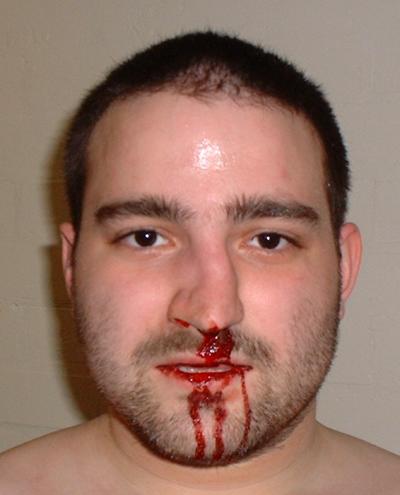Nasal fracture: Difference between revisions
imported>Nancy Sculerati MD No edit summary |
imported>Nancy Sculerati MD |
||
| Line 5: | Line 5: | ||
=Recognition= | =Recognition= | ||
Many physicians make a diagnosis of a nasal fracture by clinical history and physical examination rather than by x-ray or other imaging study. | Many physicians make a diagnosis of a nasal fracture by clinical history and physical examination rather than by x-ray or other imaging study. | ||
[[Image:BrokenNose.jpg]] | |||
=Associated conditions= | =Associated conditions= | ||
Revision as of 18:47, 24 February 2007
Nasal fracture is a common occurence in adults. Of all the human facial bones, the nasal bones are most frequently broken. In children, trauma is less likely to actually sharply break the nasal bones. Particularly in young children and toddlers, the paired nasal bones are quite flexible and tend to bend, or break into what is called a "green stick fracture", reminiscent of the way a young twig will bend rather than snap.
At any age, a break in the nasal bone may be of little consequence. Unlike the arm or rib, where muscles insert onto the bone and will pull at each side of the break, distracting the fracture- the nasal bones are structural features that give shape to the nasal airway and face rather than function as a moving part. If the bones are not pushed out of position (displaced), then the fracture is likely to heal without causing a change in the shape of the nose.
Recognition
Many physicians make a diagnosis of a nasal fracture by clinical history and physical examination rather than by x-ray or other imaging study.
Associated conditions
When the face has been struck forcibly enough to cause a nasal fracture, a careful examination of the other bones of the face, and the skull, is often indicated.
Immediate Treatment
Examination of the inside of the nose is important, because of the possibility of a septal hematoma.
Ice.
Reduction of displaced fracture.
Nasal fracture in children
Since the nasal bones in young children are so resilient, when there is clinical evidence of a fracture then there was likely a significant blow to the head or face.
